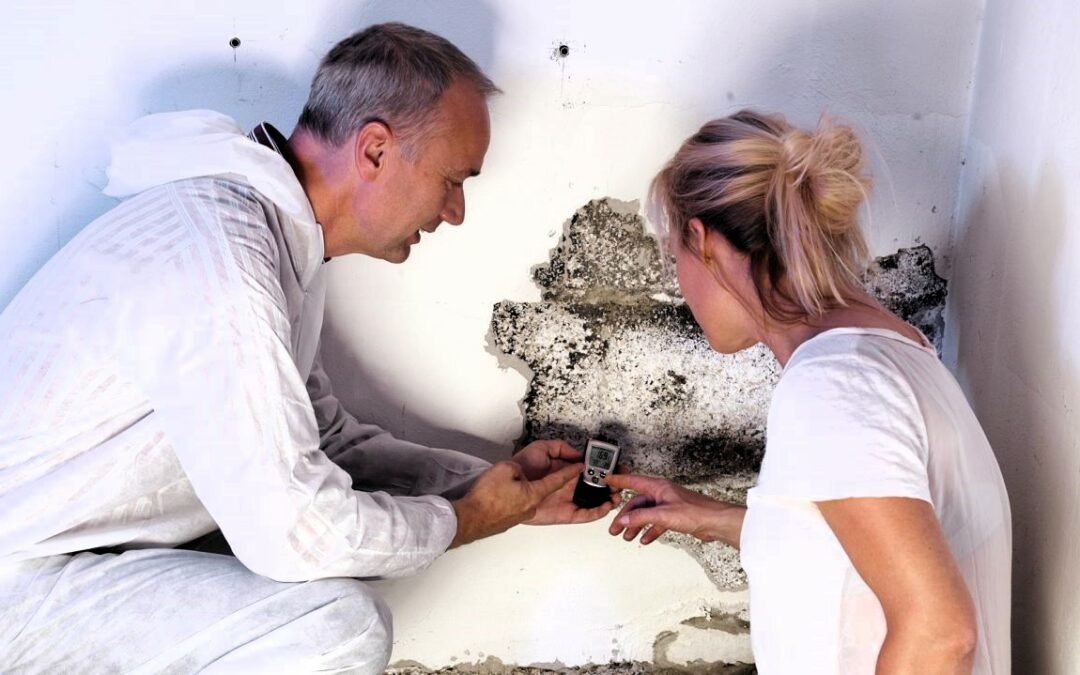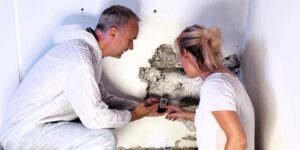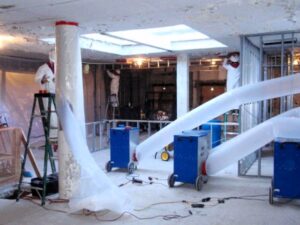if you don’t know What Happens During Mold Remediation, then You have to know This. Mold in homes is more than just an unsightly nuisance; it poses serious health risks and can undermine the structural integrity of your living spaces. Recognizing the significance of professional intervention is the first step toward reclaiming a safe and healthy environment. This article dives into the critical process of mold remediation, shedding light on what homeowners can expect from this essential service.
Mold remediation is a specialized service aimed at effectively removing mold from residential areas, utilizing advanced techniques and equipment to ensure a mold-free, healthy living environment.
Understanding Mold Remediation
Mold remediation is an essential process aimed at identifying, containing, and eliminating mold from properties affected by this common but hazardous fungus. The urgency of engaging in mold remediation stems from the significant health risks associated with mold exposure, including allergies, respiratory issues, and other serious health conditions. This process is not merely about removing visible mold but ensuring that the air quality of the indoor environment is restored to safe levels, protecting the health and well-being of occupants.
The Mold Remediation Process: A Step-by-Step Guide
Initial Assessment and Preparation
The journey toward a mold-free home begins long before the remediation team sets foot on the property. Homeowners are advised to follow preliminary steps to prepare for the arrival of the remediation team. Key preparatory actions include repairing any water leaks to halt the spread of mold and isolating the affected area to minimize the risk of cross-contamination. This stage may also involve the removal of unaffected belongings to safeguard them from potential contamination and to clear the workspace for the professionals.
Mold Removal Techniques
With the groundwork laid, the remediation team moves onto the heart of the matter: the removal of mold. This phase is critical and must be handled with precision and care. Following Lee Wallender’s insights, remediation workers equip themselves with comprehensive protective gear, including respirators, gloves, and full-body suits, to mitigate exposure to harmful mold spores during the removal process. The removal strategy encompasses a series of meticulous steps: vacuuming to collect mold spores, thorough cleaning of contaminated surfaces, and the careful disposal of mold-infested materials in sealed bags to prevent the spread of spores.
Cleaning and Disinfecting
Post-removal, the focus shifts to cleaning and disinfecting the former mold-infested areas. This involves the application of a biocide, an EPA-approved antimicrobial solution designed to kill remaining mold spores. Unlike household cleaners, biocides are professional-grade substances that ensure a deeper cleanse. After the biocide application, encapsulation techniques are employed. This process involves covering the cleaned surfaces with a sealant or paint that traps any residual spores, thereby preventing future mold growth. This step is pivotal in the long-term prevention of mold recurrence.
Final Steps
The remediation process concludes with the drying, repairing, or rebuilding of affected areas. Ensuring that all materials are dry is crucial to prevent the reappearance of mold. This may involve the use of dehumidifiers, fans, or other drying equipment. Subsequently, any materials that were removed or damaged, such as drywall or flooring, are repaired or replaced. This restoration phase is essential not only for the structural integrity of the home but also for restoring its aesthetic appeal and livability.
Timeframe and What to Expect
The duration of the mold remediation process is variable, typically ranging from one to five days, depending on several factors including the extent of mold contamination and its location within the property. This timeframe is crucial for ensuring that the remediation is thorough and that all areas are meticulously cleaned and restored to safe conditions.
Mold Remediation Method
Identifying the Source of Mold Growth
A fundamental, yet often overlooked aspect of mold remediation is the precise identification of the mold growth source. While the eradication of visible mold is crucial, it is only part of the solution. Equally important is addressing the underlying causes of mold proliferation. Common culprits include persistent water leaks, excessive moisture accumulation, and inadequate ventilation within the home. Uncovering and rectifying these root causes not only tackles the current mold issue but also lays the groundwork for preventing future occurrences. Homeowners are encouraged to inspect their homes regularly for signs of moisture problems and seek professional assessments to identify less obvious sources of mold growth.
The Integral Role of Mold Testing
Mold testing is an essential component of the mold remediation process. Its significance lies in determining the mold infestation’s scope and identifying the specific mold strains present. Professional mold testing provides the critical information needed for remediation experts to devise a precise, effective plan of action tailored to the distinct nature of the mold issue at hand. This step ensures that the remediation efforts are not just a blanket approach but are instead focused on the specific needs of the situation, leading to more effective and long-lasting results.
Advanced Remediation Techniques
Beyond the conventional methods of mold removal, such as thorough cleaning and disinfecting, advanced remediation techniques may be necessary for more severe mold infestations. Techniques like air filtration to remove mold spores from the environment, mold encapsulation to contain and neutralize mold, and the application of antimicrobial treatments to kill mold at the source, are among the advanced strategies employed by professionals. These methods ensure a comprehensive removal of mold, addressing not only the visible infestation but also the airborne spores and hidden mold growth, thereby significantly reducing the chance of recurrence.
Environmental Considerations in Mold Remediation
Environmental factors play a crucial role in the mold remediation process. Elements such as indoor humidity levels and air quality directly impact the likelihood of mold growth. By controlling these environmental variables, homeowners can create conditions that are less conducive to mold proliferation. Strategies include maintaining indoor humidity at recommended levels (typically between 30% and 50%) and improving ventilation to reduce moisture buildup. These preventative measures not only assist in the immediate remediation efforts but also contribute to a healthier indoor environment in the long term.
Professional Expertise and Certification
The selection of a reputable, certified mold remediation company is vital to the success of the remediation process. Certified professionals bring a wealth of knowledge, experience, and specialized equipment, ensuring that mold removal is conducted safely and effectively. These experts adhere to industry standards and protocols, offering peace of mind to homeowners that the remediation process will be handled with the utmost professionalism and care.
Long-Term Prevention Strategies
Understanding that mold remediation is not merely a temporary fix but part of an ongoing effort to maintain a mold-free environment is crucial. Homeowners are advised to implement long-term prevention strategies to mitigate the risk of future mold issues. Regular home inspections, proactive moisture control measures, and ensuring proper ventilation are key strategies that contribute to minimizing the potential for mold recurrence. Adopting these practices helps in maintaining a healthier, more comfortable home environment over time.
Conclusion
The significance of promptly addressing mold infestations cannot be overstated. Mold not only poses a threat to the structural integrity of homes but, more importantly, to the health of its inhabitants. Professional mold remediation offers a compr ehensive and effective solution, removing the mold and addressing the conditions that led to its growth. By choosing professional remediation services, homeowners can protect their property and ensure a safe, healthy living environment for themselves and their families.
FAQ Section About What Happens During Mold Remediation?
Is it safe to be in the house during mold remediation?
While staying in the home during remediation is often considered a personal choice, it’s advisable to vacate particularly if sensitive individuals are present, due to potential health risks.
How long should you stay out of the house after mold remediation?
Post-remediation, a waiting period of 24-72 hours is recommended to ensure the safety and effectiveness of the cleaning process, varying with the mold’s severity and type.
How do you prepare a room for mold remediation?
Homeowners should clear the affected area of personal items and furniture, ensuring valuable items are stored safely away and providing clear access for the remediation team.
How long does mold remediation take?
The duration of the remediation process is influenced by the mold’s extent, its location, and the materials affected, generally ranging from one to five days.
Can mold come back after remediation?
Mold can recur if the underlying moisture issues aren’t resolved. Ensuring proper moisture control and regular inspections are key to preventing future mold growth.



